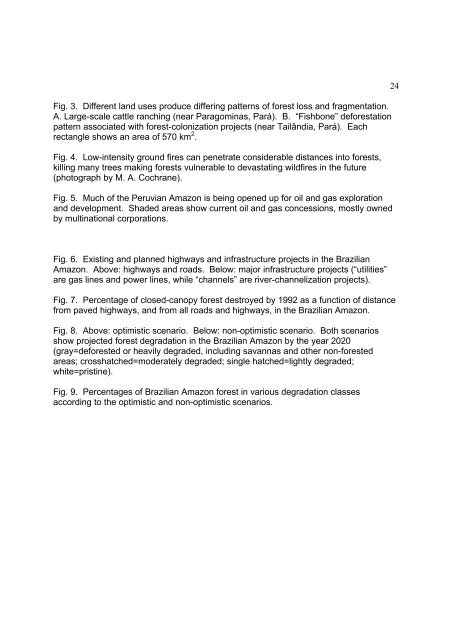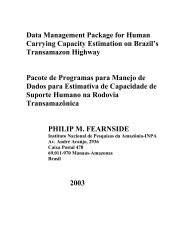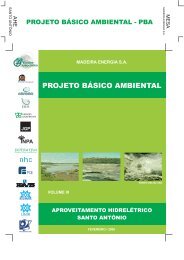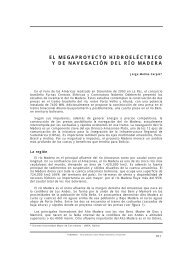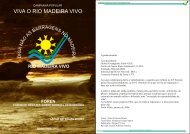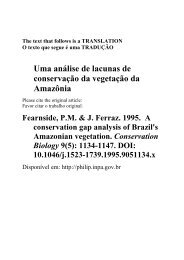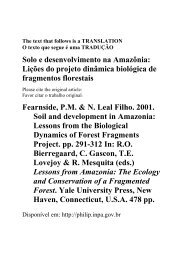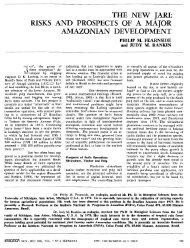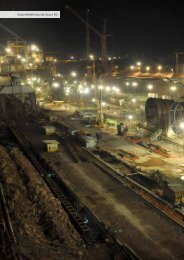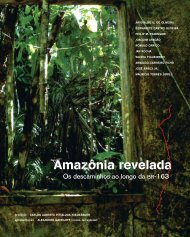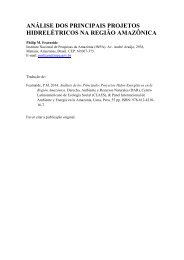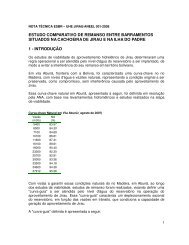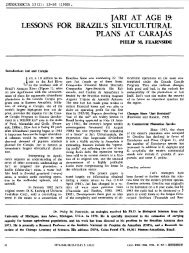THE FUTURE OF THE AMAZON - Philip M. Fearnside - Inpa
THE FUTURE OF THE AMAZON - Philip M. Fearnside - Inpa
THE FUTURE OF THE AMAZON - Philip M. Fearnside - Inpa
You also want an ePaper? Increase the reach of your titles
YUMPU automatically turns print PDFs into web optimized ePapers that Google loves.
Fig. 3. Different land uses produce differing patterns of forest loss and fragmentation.A. Large-scale cattle ranching (near Paragominas, Pará). B. “Fishbone” deforestationpattern associated with forest-colonization projects (near Tailândia, Pará). Eachrectangle shows an area of 570 km 2 .Fig. 4. Low-intensity ground fires can penetrate considerable distances into forests,killing many trees making forests vulnerable to devastating wildfires in the future(photograph by M. A. Cochrane).Fig. 5. Much of the Peruvian Amazon is being opened up for oil and gas explorationand development. Shaded areas show current oil and gas concessions, mostly ownedby multinational corporations.24Fig. 6. Existing and planned highways and infrastructure projects in the BrazilianAmazon. Above: highways and roads. Below: major infrastructure projects (“utilities”are gas lines and power lines, while “channels” are river-channelization projects).Fig. 7. Percentage of closed-canopy forest destroyed by 1992 as a function of distancefrom paved highways, and from all roads and highways, in the Brazilian Amazon.Fig. 8. Above: optimistic scenario. Below: non-optimistic scenario. Both scenariosshow projected forest degradation in the Brazilian Amazon by the year 2020(gray=deforested or heavily degraded, including savannas and other non-forestedareas; crosshatched=moderately degraded; single hatched=lightly degraded;white=pristine).Fig. 9. Percentages of Brazilian Amazon forest in various degradation classesaccording to the optimistic and non-optimistic scenarios.


